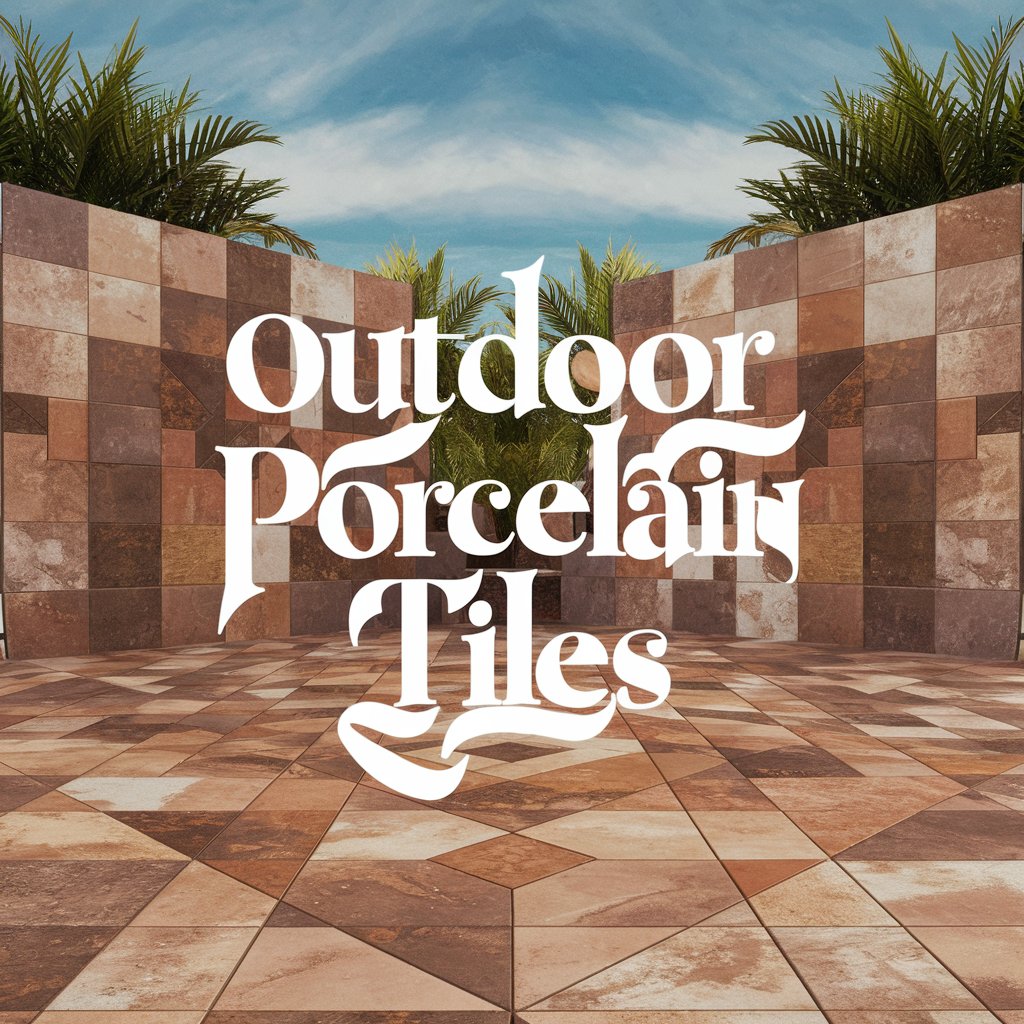Choosing the right flooring for outdoor spaces requires careful consideration of durability, aesthetics, and maintenance. Outdoor tiles are a superior choice, offering a perfect blend of elegance, resilience, and functionality. They are designed to withstand the elements while enhancing the visual appeal of outdoor areas, making them a preferred option for various exterior design projects.
Durability and Weather Resistance
Outdoor porcelain tiles are renowned for their exceptional durability and resistance to weather extremes. Crafted from dense clay and fired at high temperatures, these tiles possess inherent strength, making them highly resistant to cracking, fading, and water absorption. Their non-porous nature prevents moisture penetration, safeguarding against frost damage in colder climates. Whether it’s scorching sun, heavy rain, or freezing temperatures, outdoor porcelain tiles retain their integrity, making them a long-lasting investment for outdoor spaces.
Versatility in Design and Aesthetics
The versatility of outdoor porcelain tiles extends to their design and aesthetic possibilities. Available in various colours, patterns, textures, and finishes, they effortlessly mimic the appearance of natural stone, wood, or concrete. Whether you are seeking a rustic charm, contemporary elegance, or a classic look, outdoor porcelain tiles suit diverse design preferences. Their ability to complement various architectural styles and landscaping concepts makes them ideal for creating visually stunning outdoor areas.
Low Maintenance and Easy Cleaning
One of the compelling advantages of outdoor porcelain tiles is their low maintenance requirements. Their non-porous surface prevents dirt, moss, or stains buildup, simplifying cleaning tasks. Regular sweeping and occasional washing with mild soap and water are usually sufficient to keep these tiles looking pristine. Unlike other outdoor flooring materials requiring periodic sealing or treatments, outdoor porcelain tiles offer hassle-free maintenance, allowing homeowners more time to enjoy their outdoor spaces.
Slip-Resistance and Safety
Safety is paramount in outdoor areas, particularly around pools, patios, or pathways. Outdoor porcelain tiles often come with textured finishes or anti-slip surfaces, providing enhanced traction and minimising the risk of slips or falls, even when wet. Manufacturers offer a variety of finishes and treatments that increase the tiles’ slip resistance, ensuring a safer environment for families and guests in outdoor settings.
Environmental Friendliness and Sustainability
Outdoor porcelain tiles are an eco-friendly choice, contributing to sustainable construction practices. They are manufactured using natural materials, and their durability translates to a longer lifecycle, reducing the need for frequent replacements. Furthermore, they are recyclable at the end of their lifespan, promoting environmental sustainability.
Cost-Effectiveness and Long-Term Value
While the initial cost of outdoor porcelain tiles might be higher than other outdoor flooring options, their long-term value outweighs the initial investment. Their durability and minimal maintenance requirements reduce long-term costs associated with replacements or extensive upkeep. Additionally, their ability to retain their appearance and structural integrity for years ensures they maintain their value over time.
Resistance to Stains and Chemicals
Outdoor porcelain tiles possess remarkable resistance to stains and chemicals, making them suitable for various outdoor settings. Their non-porous surface prevents liquids from penetrating, allowing spills to be easily wiped away without leaving stubborn stains. Additionally, these tiles are highly resistant to chemical damage from substances such as chlorine (commonly found in pool areas) or other cleaning agents, ensuring their longevity and appearance over time.
Fade Resistance and Colour Stability
Outdoor porcelain tiles maintain colour stability and resist fading even when exposed to prolonged sunlight and UV radiation. This characteristic is particularly advantageous for outdoor areas that receive direct sunlight throughout the day. The tiles retain their vibrant colours and original appearance, ensuring that outdoor spaces maintain their visual appeal and charm for years without succumbing to the effects of sun exposure.
Heat Resistance and Thermal Conductivity
Outdoor porcelain tiles exhibit excellent heat resistance, making them ideal for areas exposed to high temperatures, such as around grills or fire pits. They can withstand thermal shock, ensuring they remain structurally sound even in fluctuating temperatures. Moreover, their low thermal conductivity makes them comfortable to walk on, even during hot weather, reducing the risk of discomfort from overly heated surfaces.
Resistance to Abrasion and Wear
These tiles are highly resistant to abrasion and wear, making them suitable for high-traffic outdoor areas. Even with frequent foot traffic or the movement of outdoor furniture, outdoor porcelain tiles maintain their integrity, preventing scratches or surface damage. This durability ensures that the tiles retain their aesthetic appeal and structural robustness, even in areas subjected to heavy use.
Conclusion
In conclusion, the superiority of outdoor tiles lies in their exceptional durability, aesthetic versatility, low maintenance, safety features, and eco-friendly attributes. These tiles redefine outdoor spaces, offering a perfect combination of beauty and resilience.
Outdoor porcelain tiles are a testament to innovation and technology, providing a flooring solution that surpasses traditional outdoor materials. Their unmatched performance and visual appeal make them ideal for elevating outdoor living areas and landscapes.




